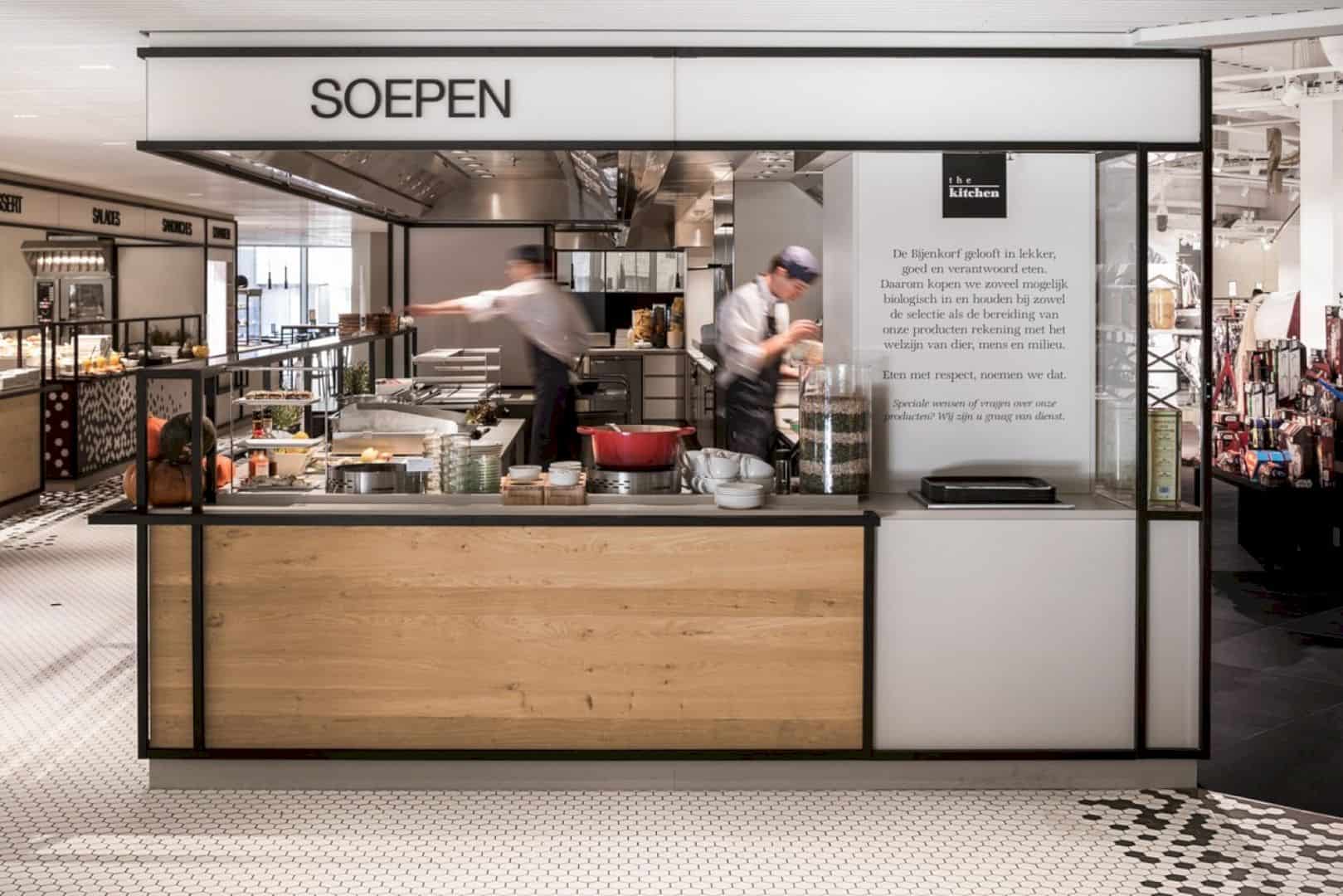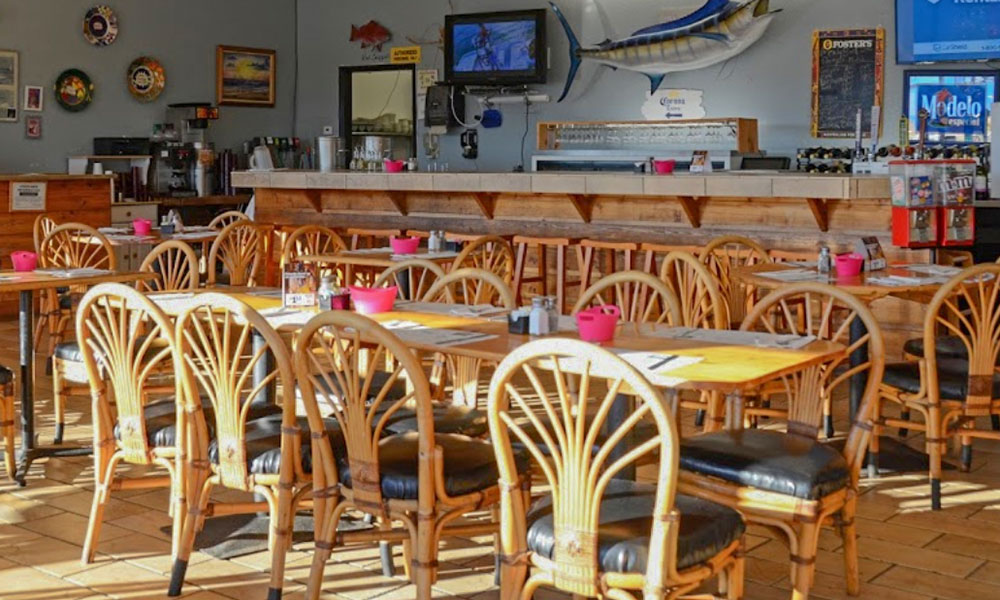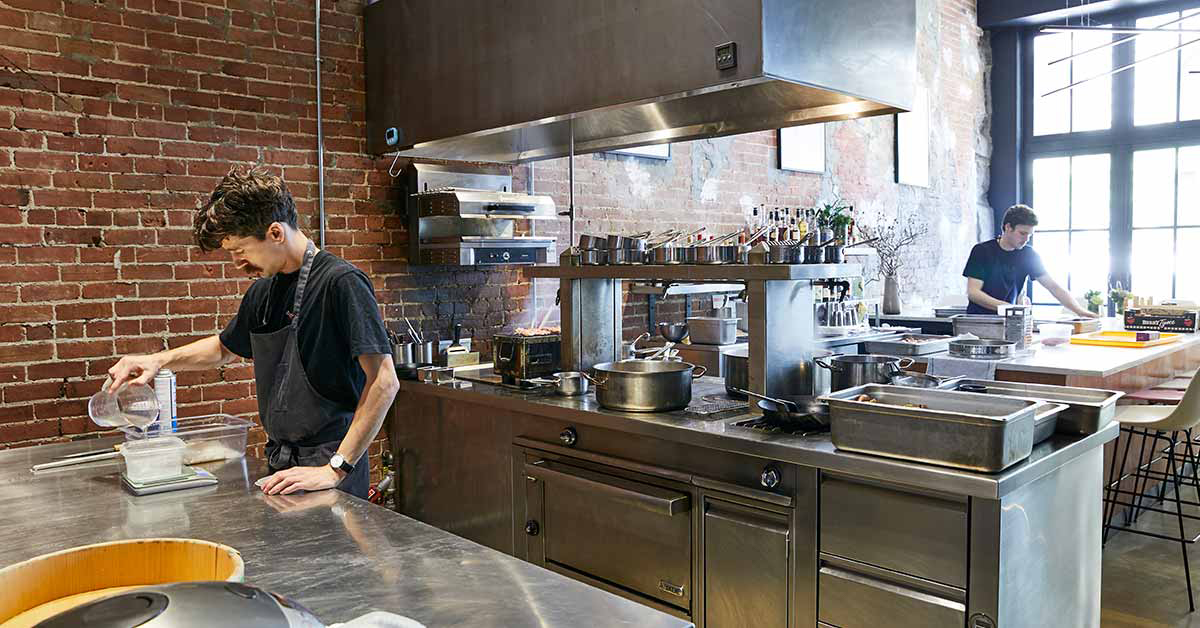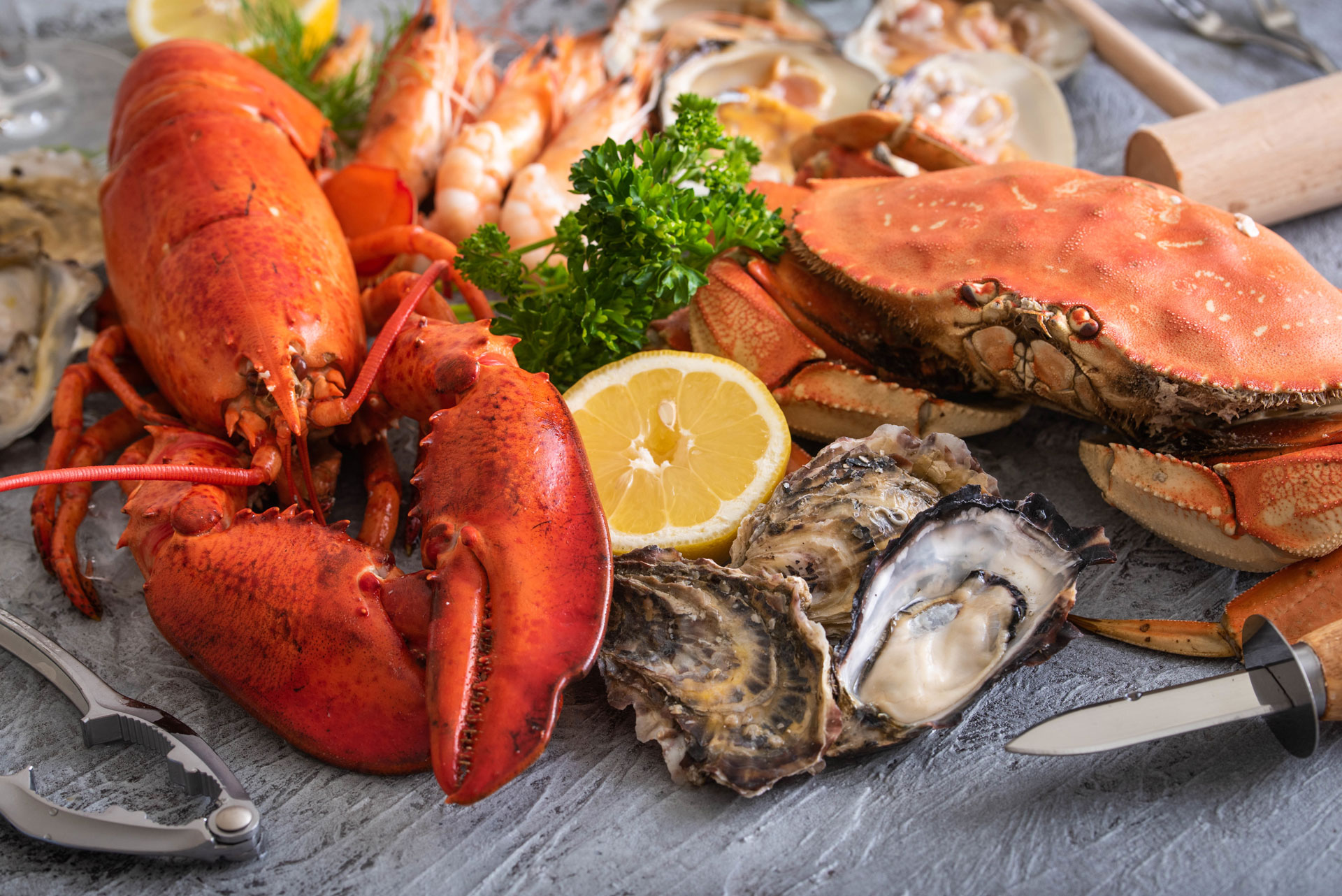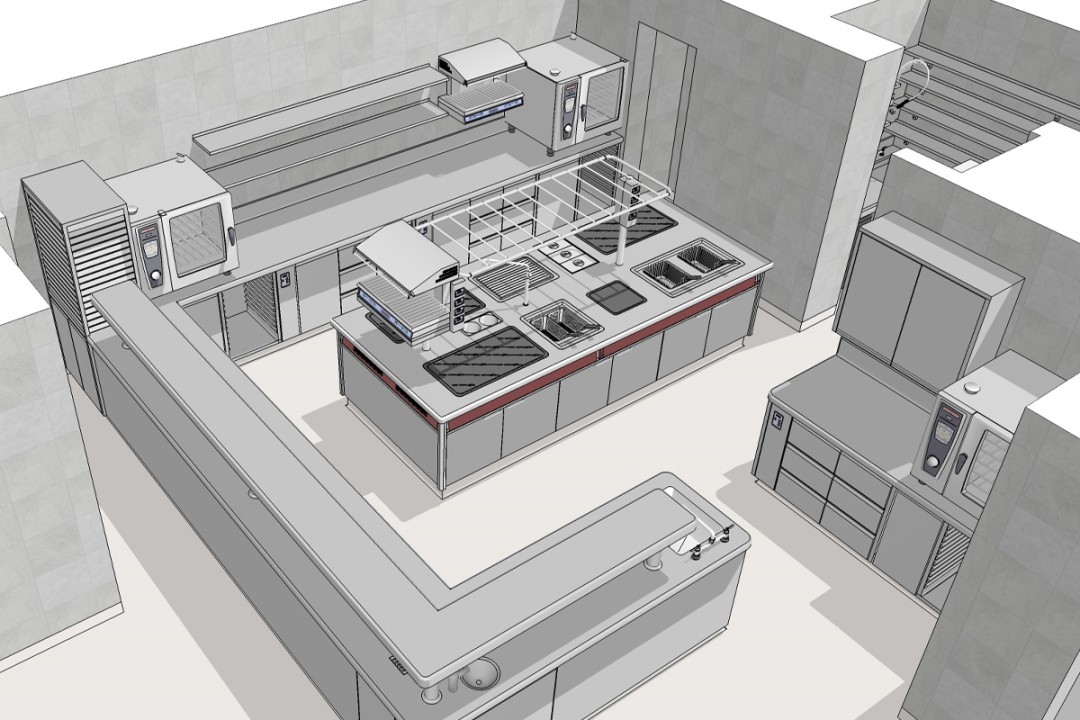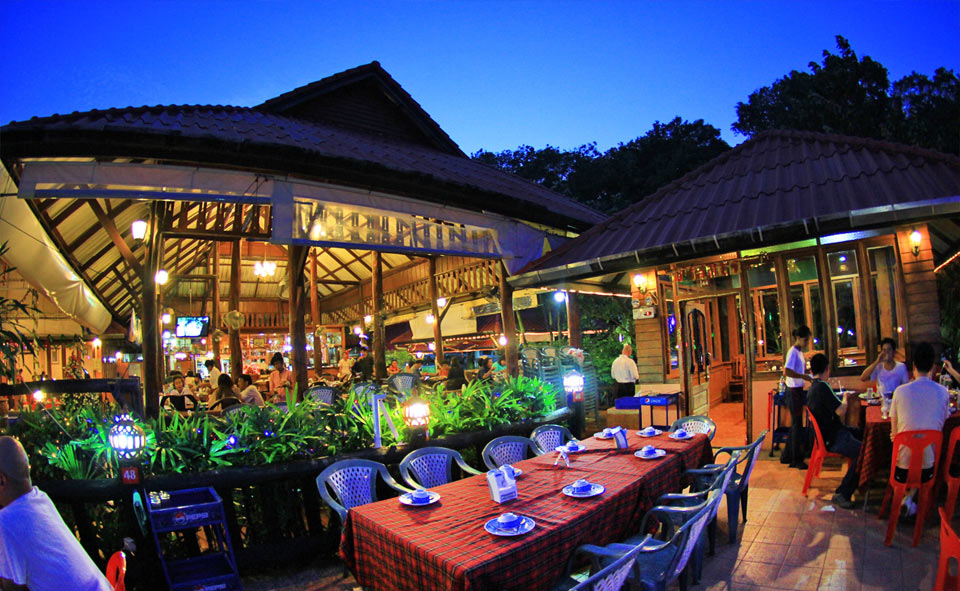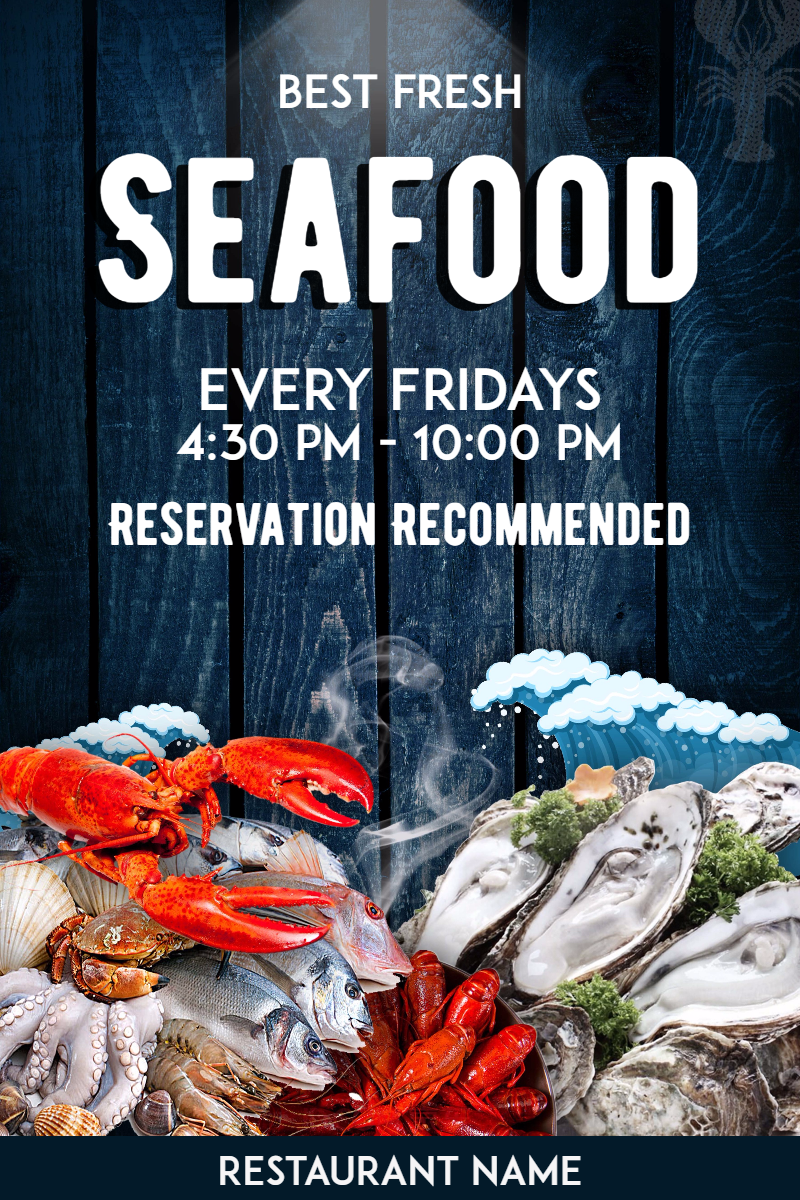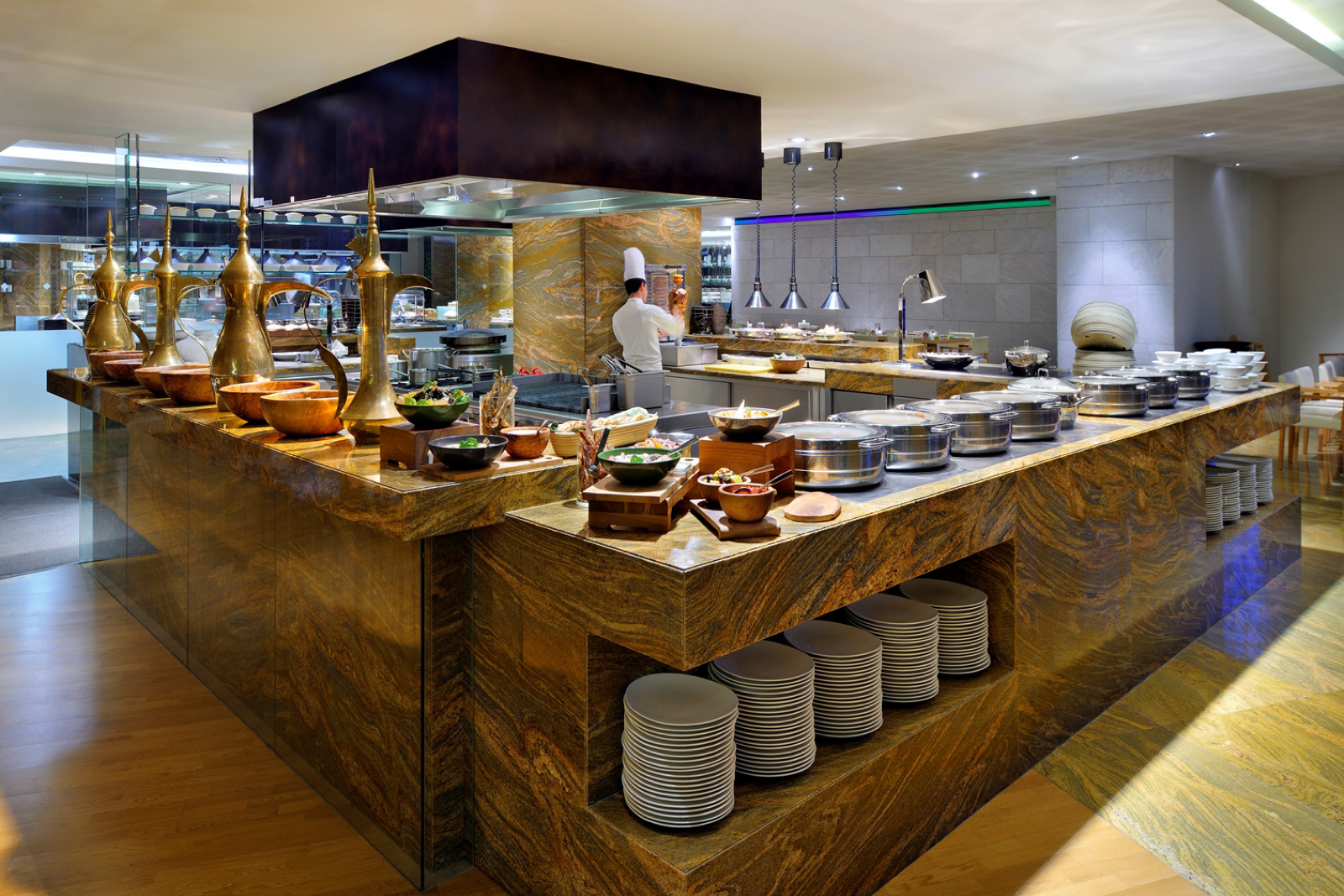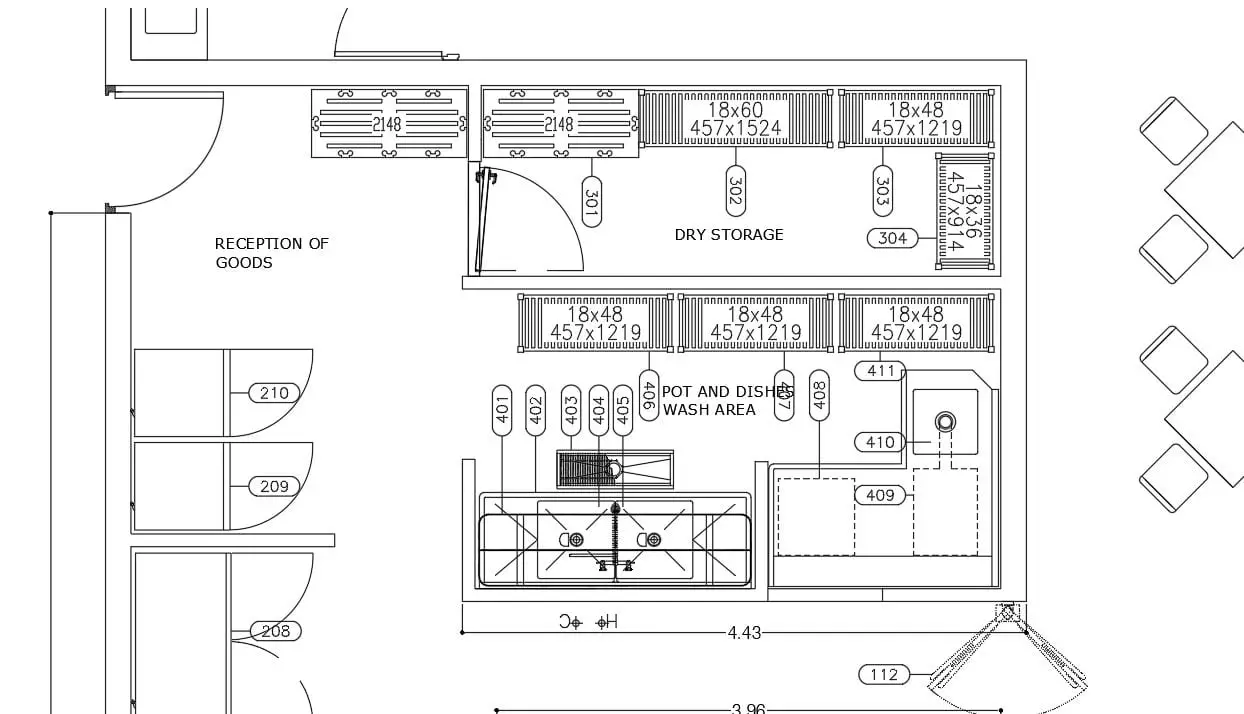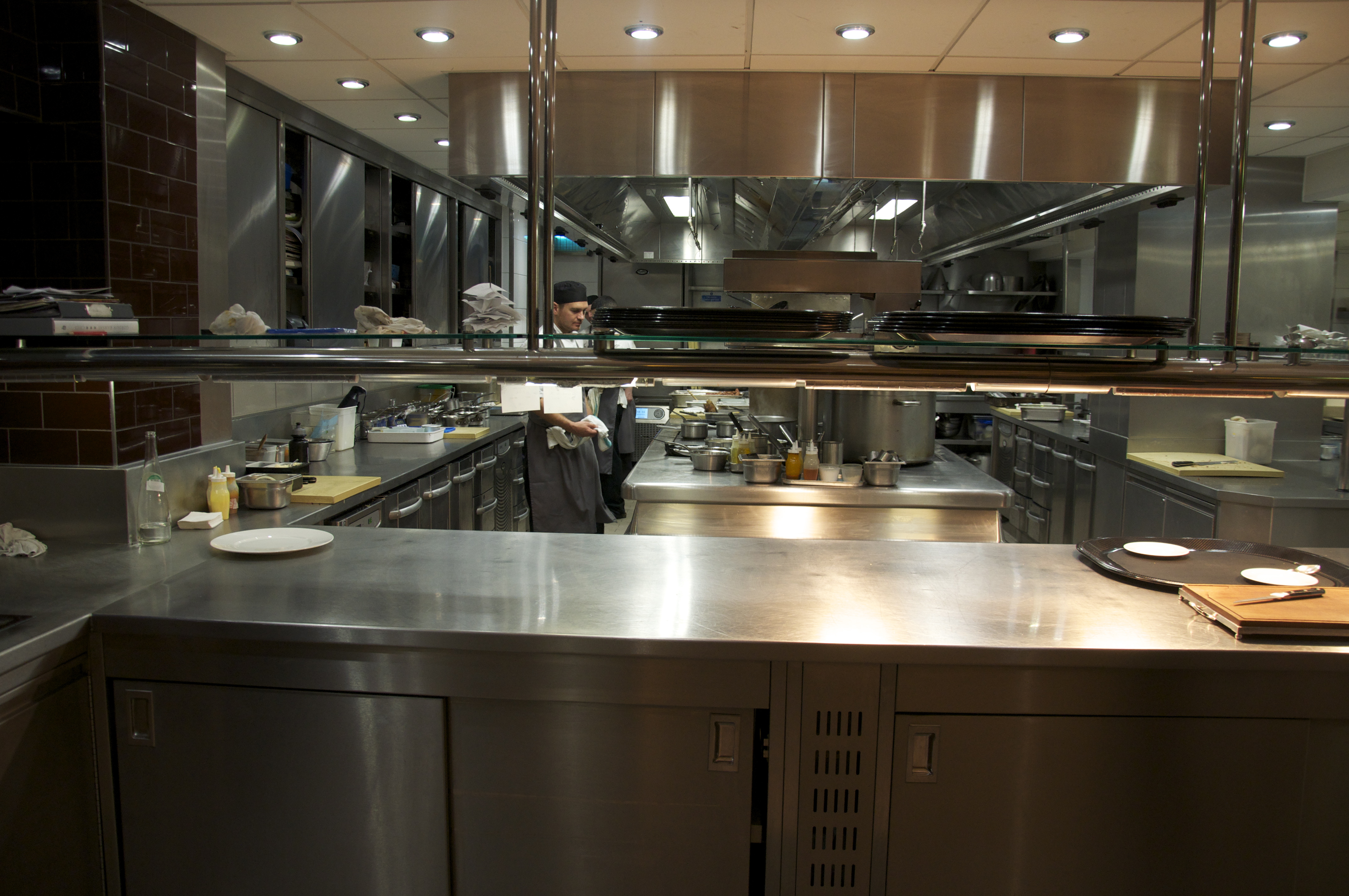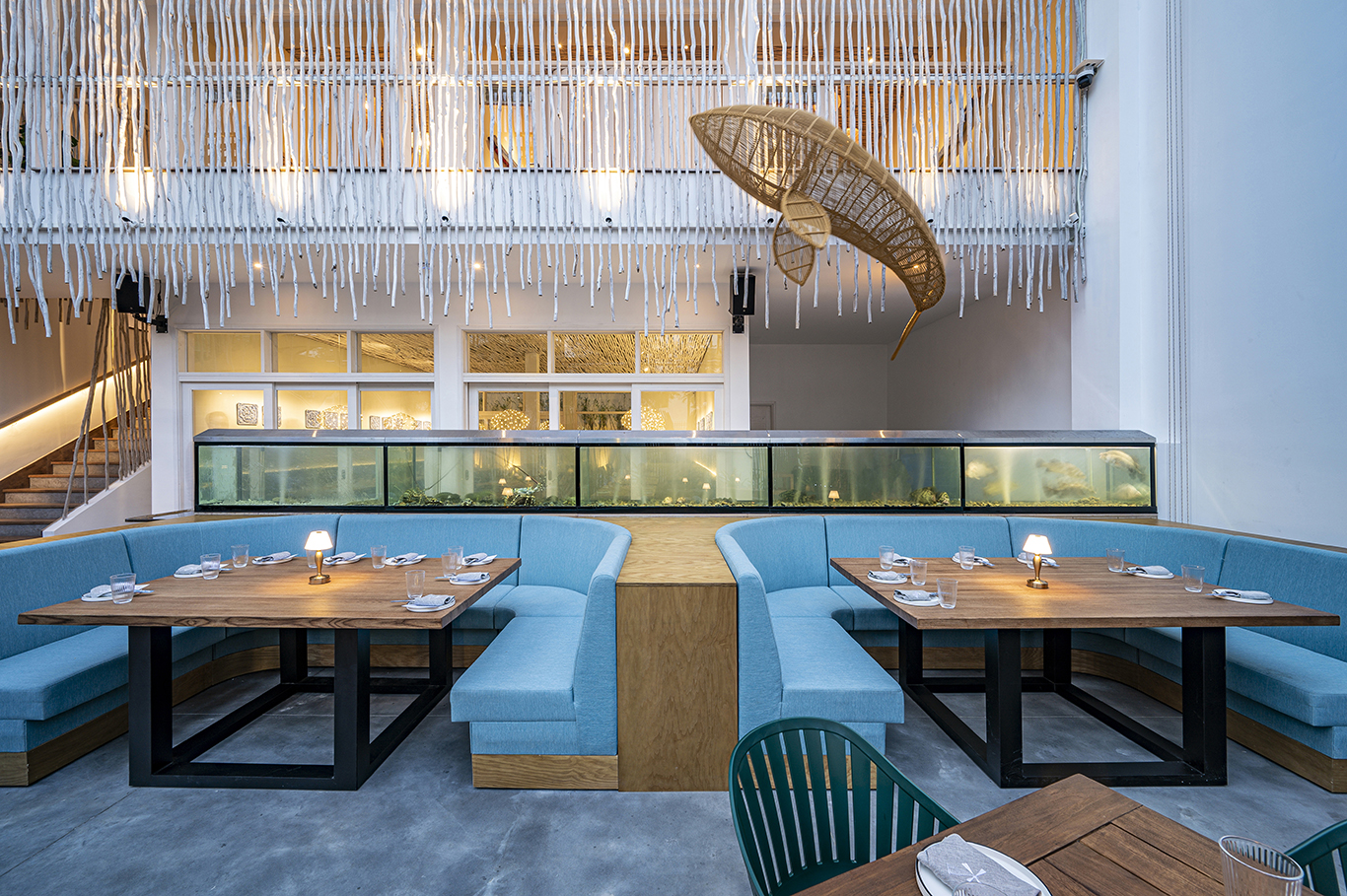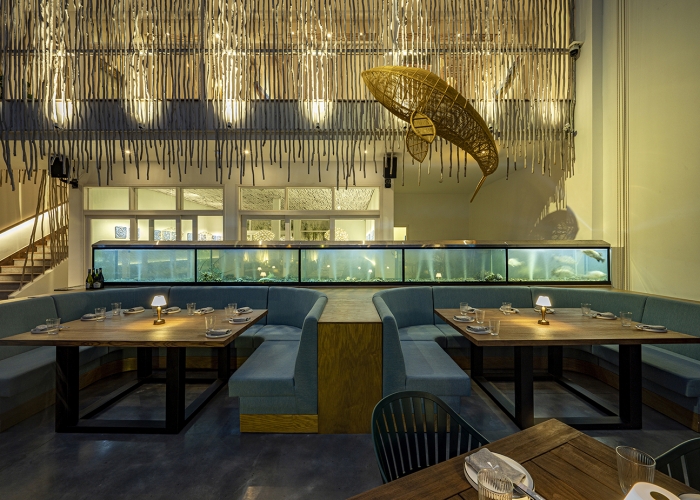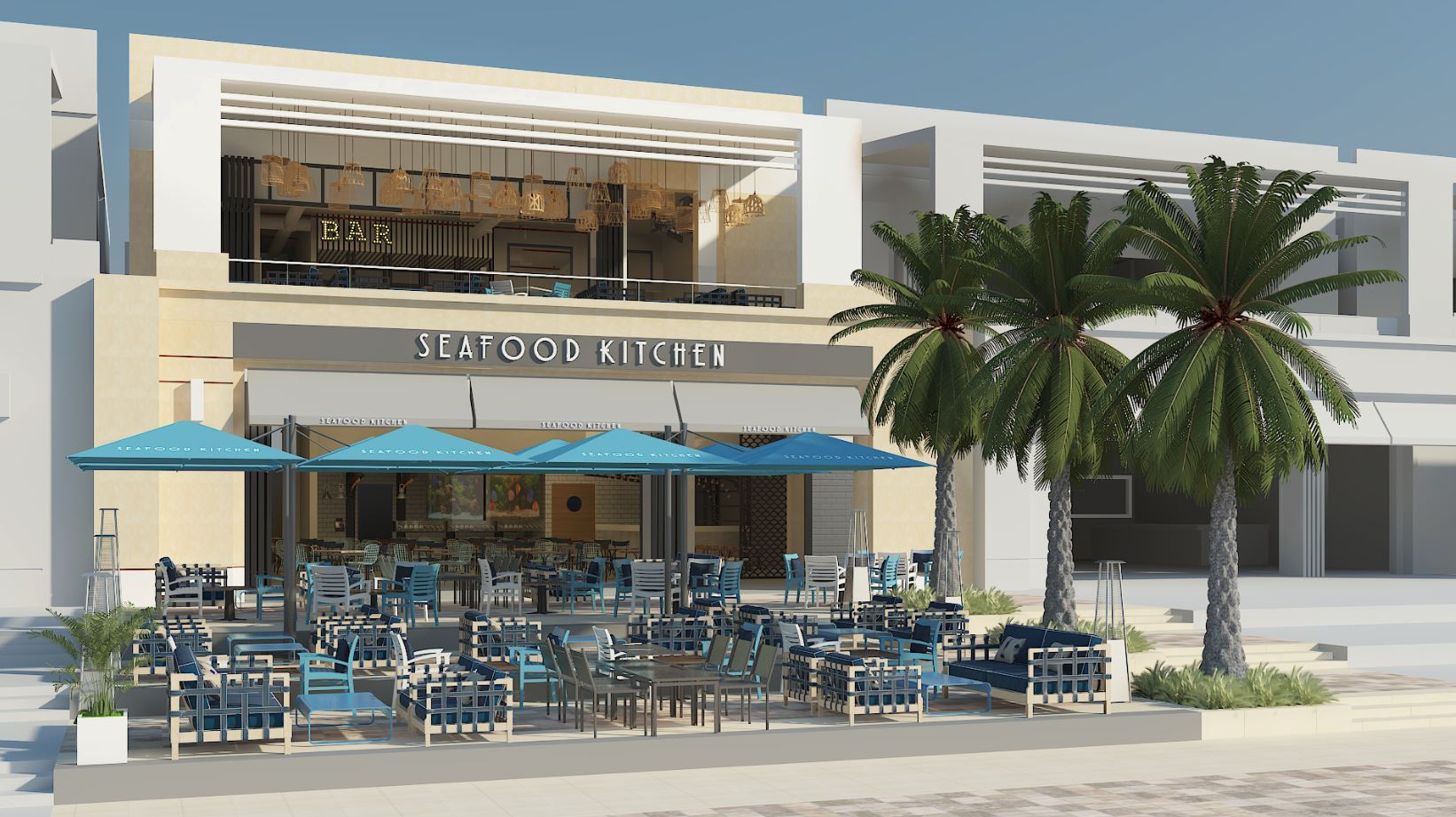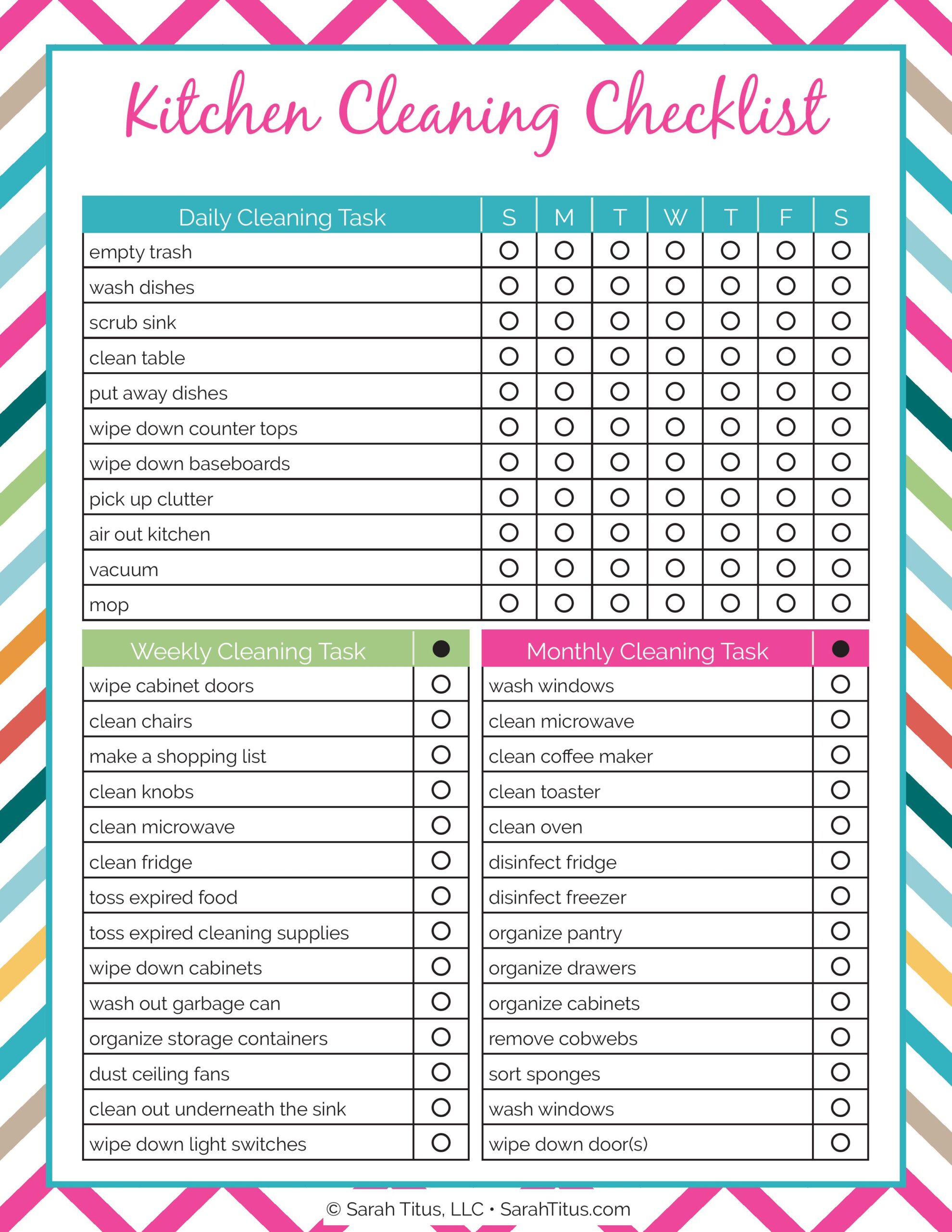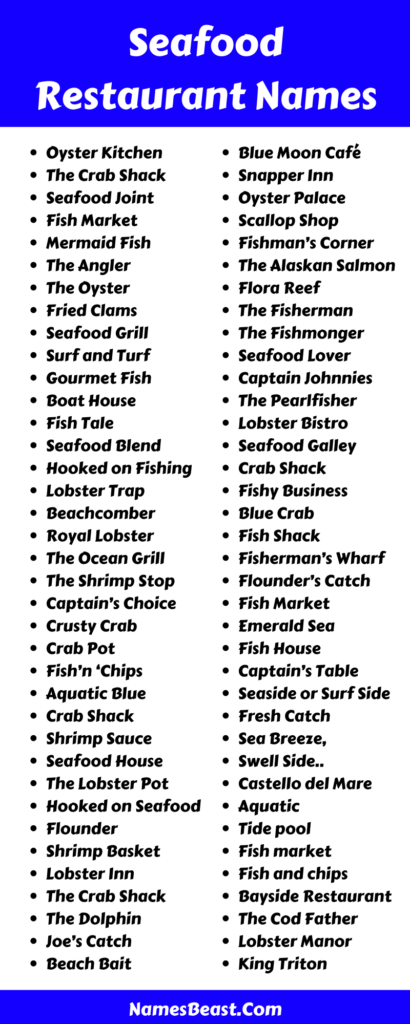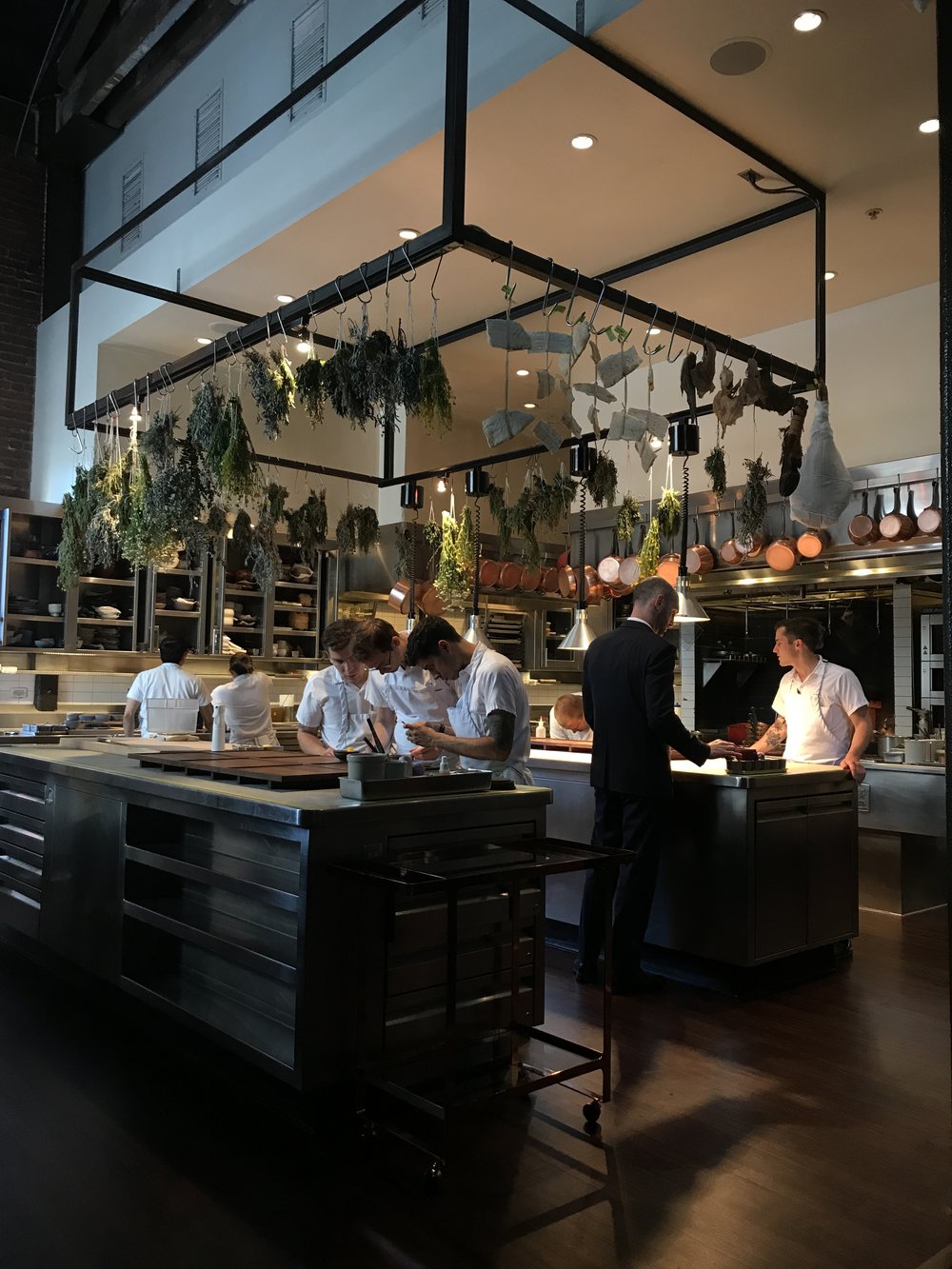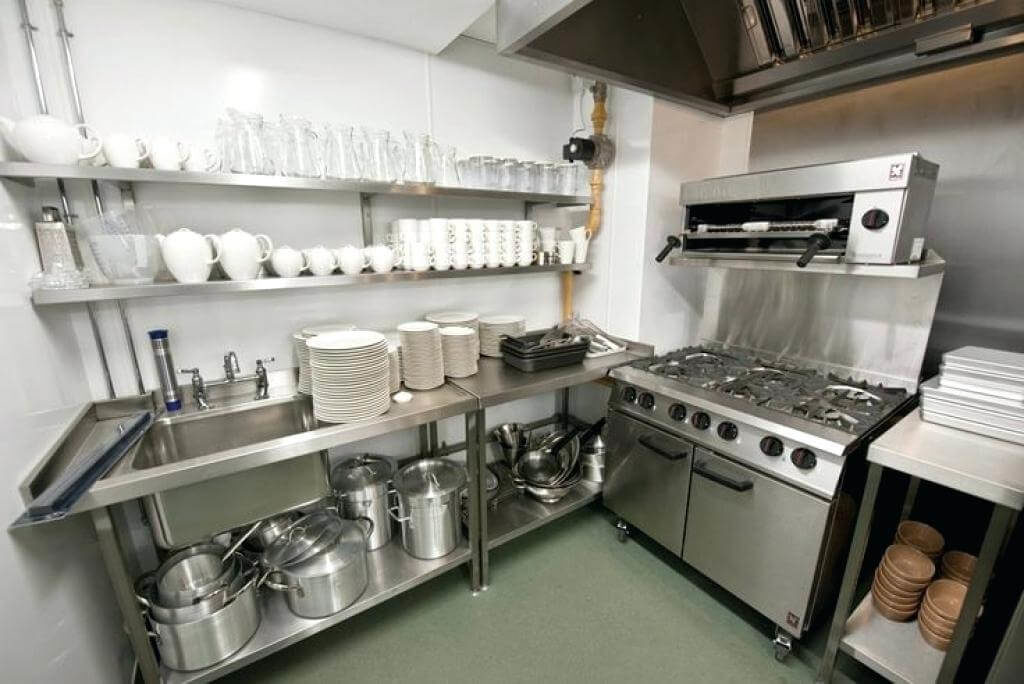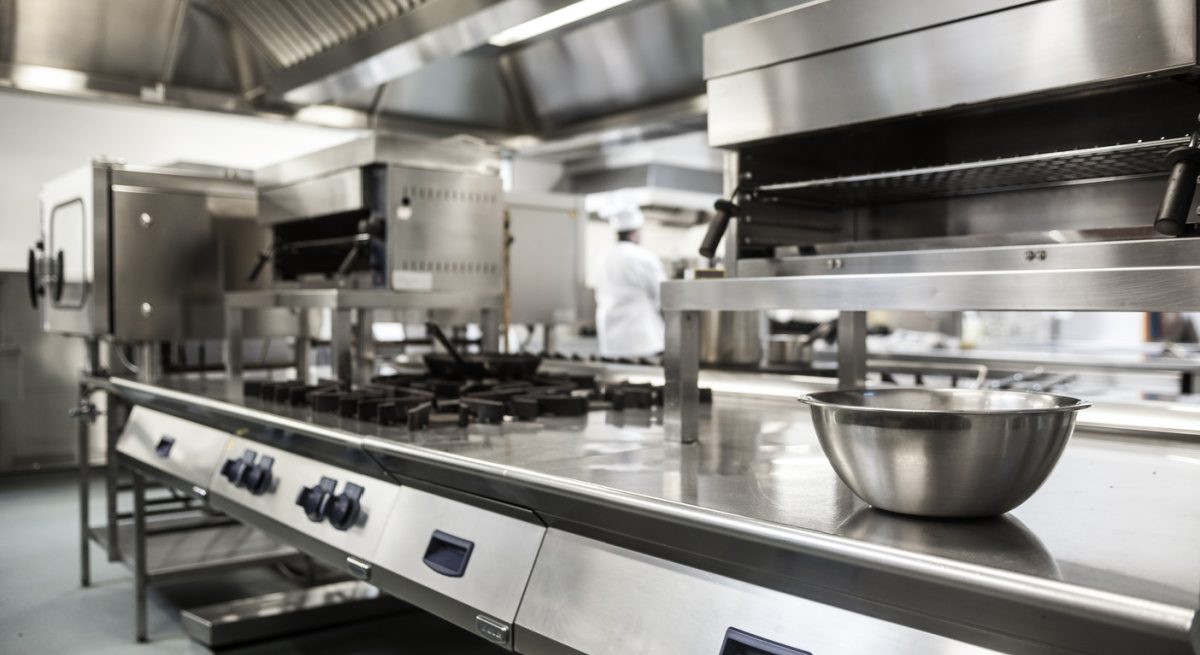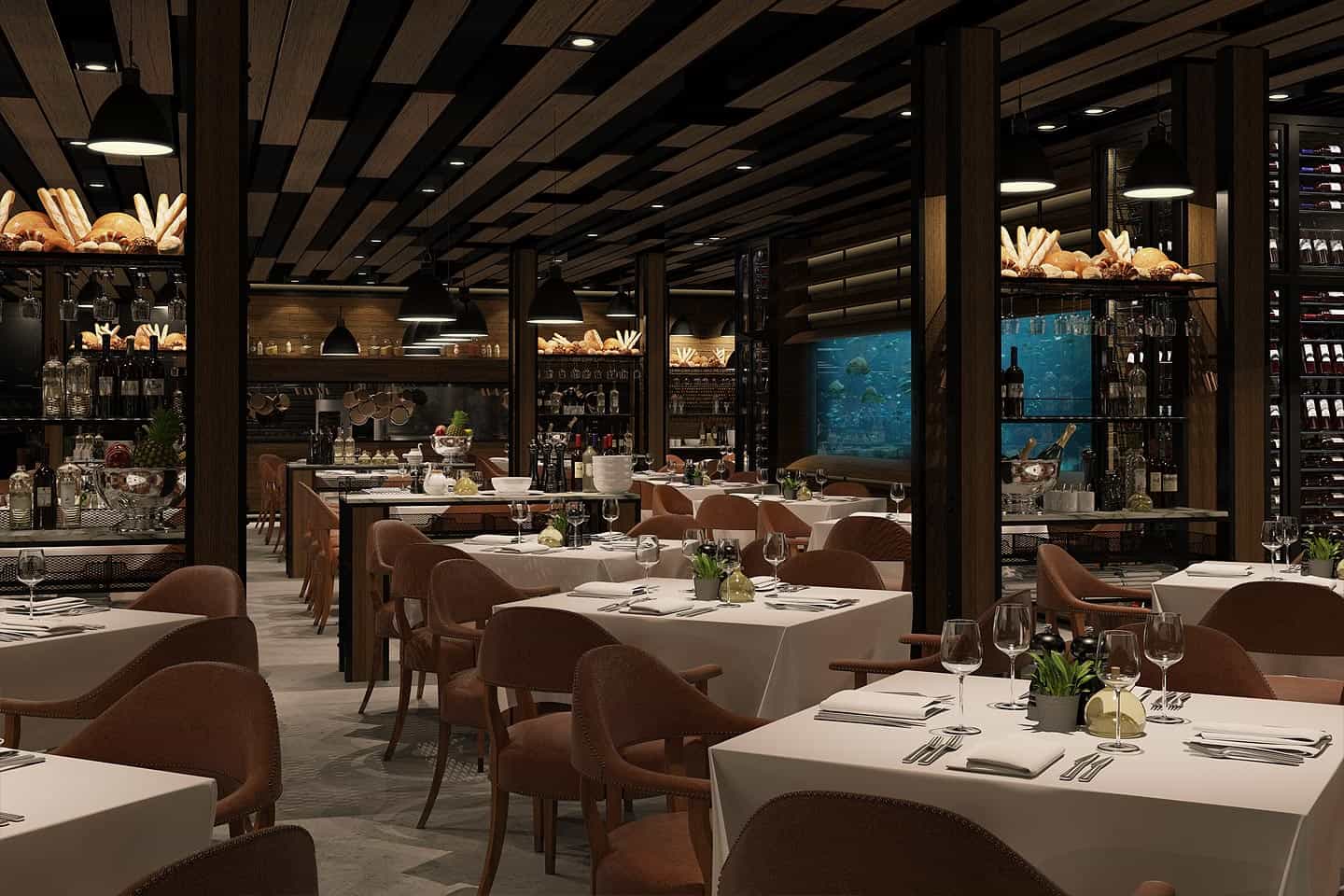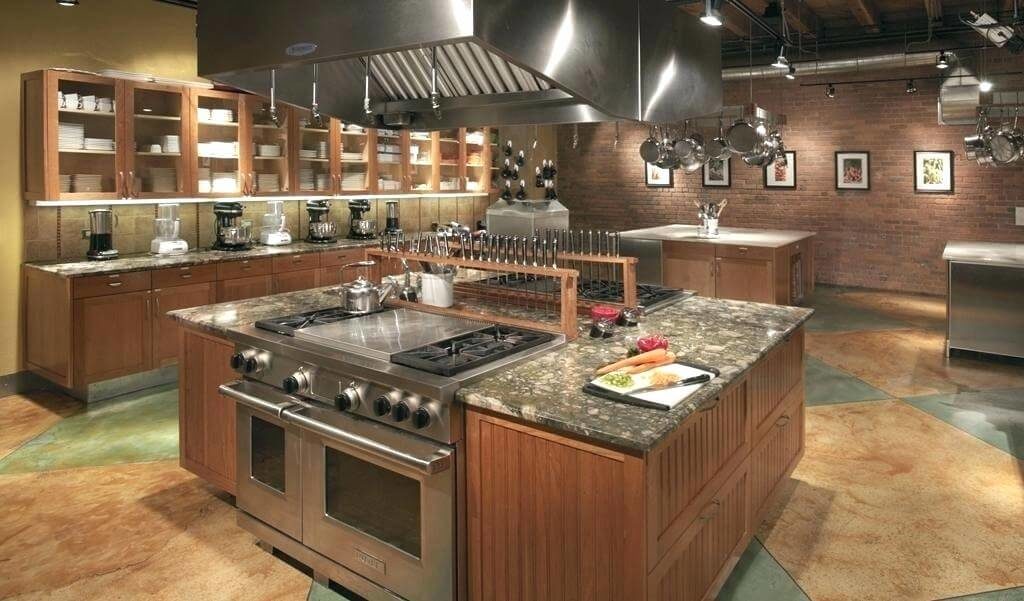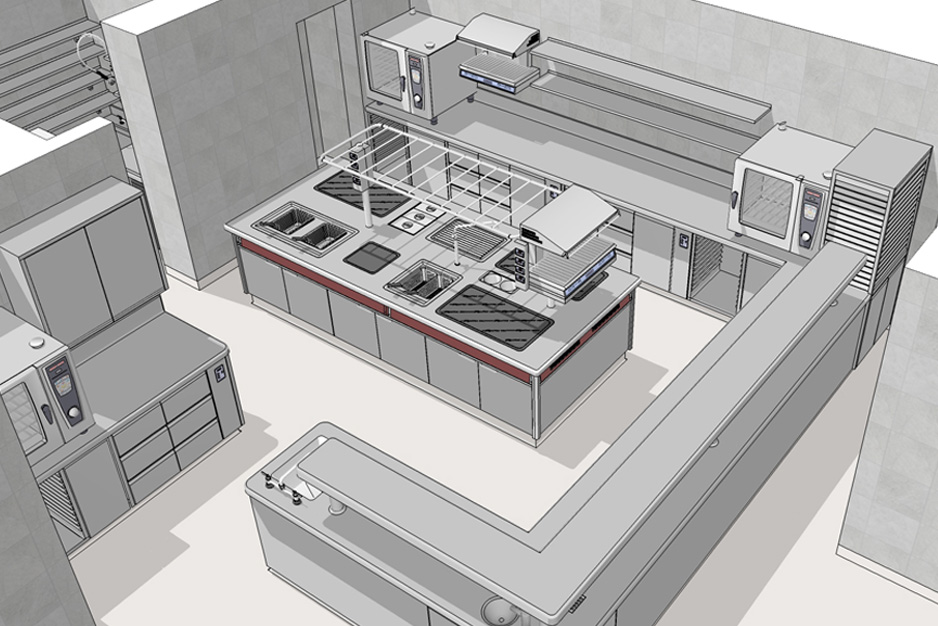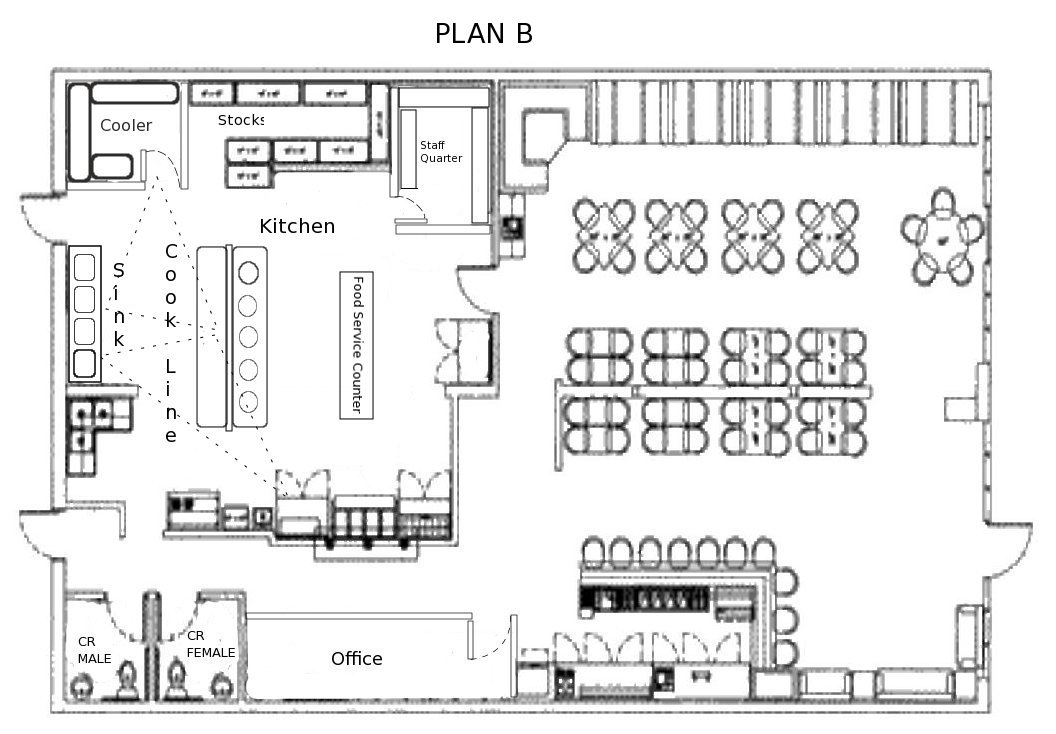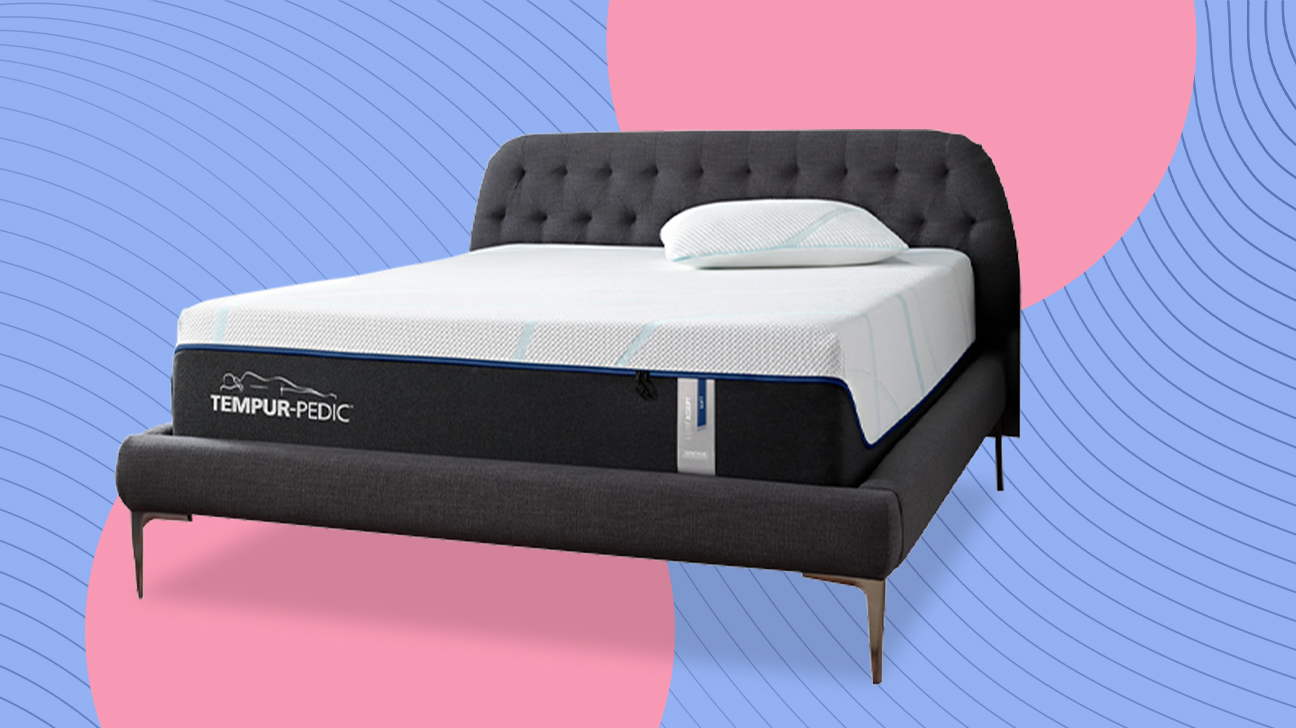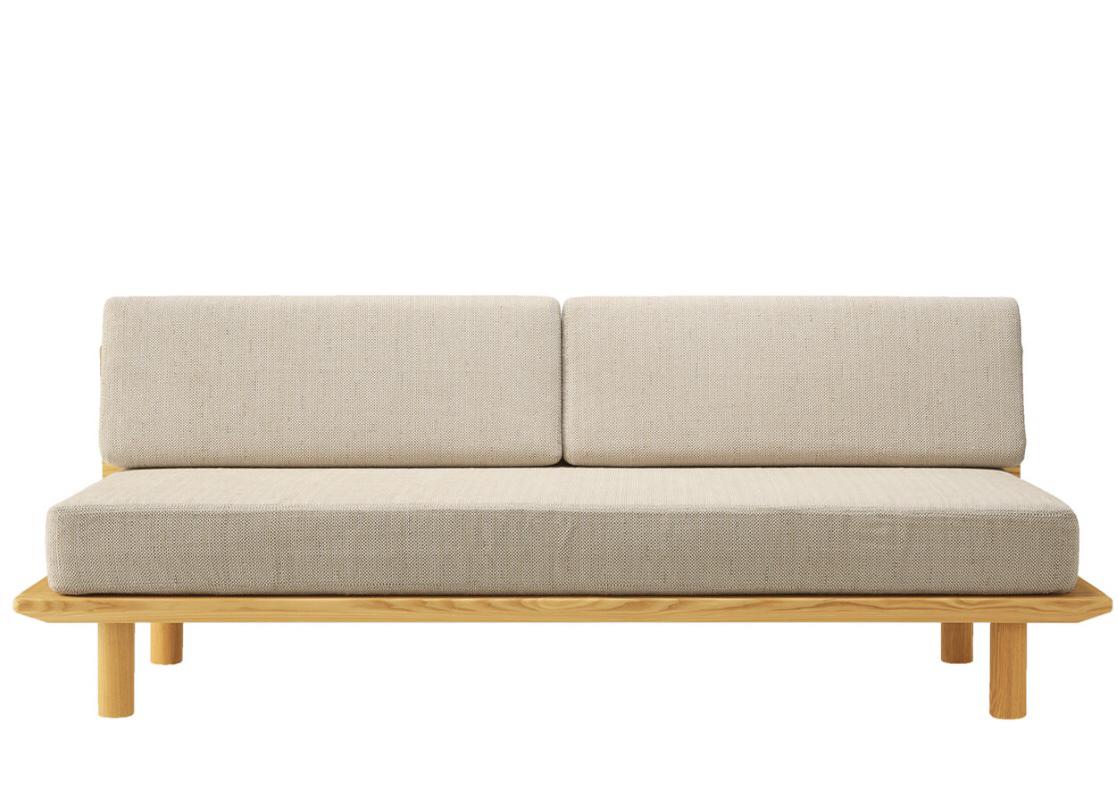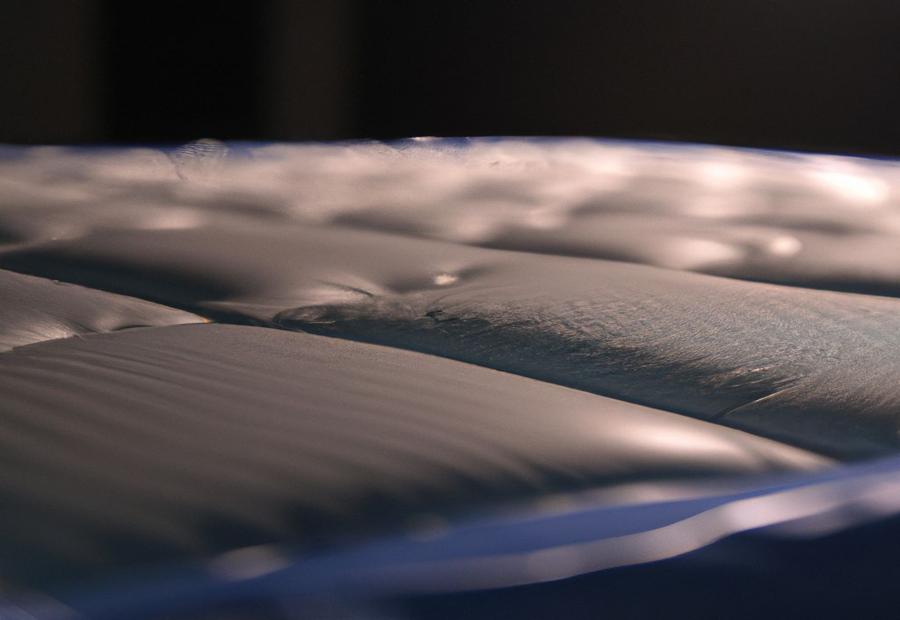When it comes to designing a commercial kitchen for a seafood restaurant, there are a few key factors to consider. First and foremost, seafood restaurants require a specific layout and equipment to handle the unique demands of their menu. From maintaining food safety to ensuring efficiency, a well-designed commercial kitchen is essential for the success of any seafood restaurant. One of the most important aspects of a seafood restaurant kitchen is the flow of the space. The layout should allow for easy movement of staff and ingredients, from receiving and storage to prep and cooking stations. This not only increases efficiency but also promotes food safety by minimizing cross-contamination. To achieve an efficient and functional kitchen layout, it is important to work with a professional designer who understands the unique needs of a seafood restaurant. They can help you create a space that maximizes productivity and minimizes the risk of accidents or foodborne illnesses.1. Commercial Kitchen Design for Seafood Restaurants
There are several popular layout options for seafood restaurant kitchens, each with its own advantages and drawbacks. One common layout is the straight line or assembly line design, where the kitchen is divided into separate stations for receiving, storage, prep, cooking, and plating. This layout is ideal for high-volume seafood restaurants as it allows for a smooth flow of ingredients and staff. Another popular layout is the zone design, which divides the kitchen into specific areas for different types of tasks, such as seafood prep, meat prep, and veggie prep. This layout works well for seafood restaurants that also serve other types of cuisine, as it allows for efficient multitasking. A third option is the island design, which features a central cooking station surrounded by prep and storage areas. This layout is ideal for open kitchen concepts, as it allows customers to see their food being prepared and creates a sense of excitement and transparency.2. Seafood Restaurant Kitchen Layout Ideas
Efficiency is key in any commercial kitchen, but it is especially important for seafood restaurants where ingredients need to be handled quickly and carefully to maintain their freshness and quality. To achieve an efficient seafood restaurant kitchen design, there are a few key elements to consider. First, the kitchen should be organized in a way that minimizes the distance between different stations, allowing for easy movement and communication between staff members. This not only saves time but also reduces the risk of accidents and delays. Second, the kitchen should be equipped with high-quality, energy-efficient appliances and tools. This not only helps to save on energy costs but also ensures that tasks can be completed quickly and effectively. Lastly, the kitchen should have a designated area for waste management, such as a composting or recycling bin. This promotes sustainability and keeps the kitchen clean and organized.3. Efficient Seafood Restaurant Kitchen Design
When it comes to equipping a seafood restaurant kitchen, it is important to invest in high-quality, durable equipment that can withstand the demands of a busy kitchen. This includes commercial-grade refrigerators, freezers, and cooking appliances. In addition to these essential pieces of equipment, seafood restaurants may also require specialized items such as seafood steamers, fryers, and grills. It is important to choose equipment that is specifically designed for handling seafood to ensure the best results and maintain the safety and quality of the food. It is also important to regularly maintain and replace equipment as needed to avoid breakdowns and ensure the kitchen runs smoothly and safely.4. Seafood Restaurant Kitchen Equipment
Designing a seafood restaurant kitchen can be a daunting task, but with the right tips and tricks, it can be a smooth and successful process. First and foremost, it is important to prioritize functionality over aesthetics. While a visually appealing kitchen is important, it should not come at the cost of efficiency and safety. Another important tip is to consider the specific needs of your seafood restaurant. For example, if your menu features a lot of seafood that needs to be shucked or deboned, you may want to invest in specialized equipment and prep stations to make these tasks easier and more efficient. It is also important to plan for future growth and expansion when designing a seafood restaurant kitchen. This may mean leaving room for additional equipment or workstations, or planning for a possible increase in staff members as the restaurant grows.5. Seafood Restaurant Kitchen Design Tips
As with any industry, there are always new trends emerging in the world of seafood restaurant kitchen design. One current trend is the use of sustainable and eco-friendly materials in the design and construction of the kitchen. This not only aligns with the values of many seafood restaurants but also promotes a healthier and more environmentally friendly space. Another trend is the incorporation of technology into the kitchen. This can include smart appliances, touchscreen monitors for order tracking, and even robotic kitchen assistants. These technological advancements not only improve efficiency but also add a touch of modernity to the kitchen. Finally, open kitchen concepts are becoming increasingly popular in seafood restaurants, allowing customers to see their food being prepared and creating a more interactive and engaging dining experience.6. Seafood Restaurant Kitchen Design Trends
With the advancements in technology, there are now various software programs available to help with the design and planning of a seafood restaurant kitchen. These programs allow for 3D modeling, which can give a more accurate representation of the final design and help with decision-making and problem-solving during the planning process. Using kitchen design software can also save time and money by allowing for changes and adjustments to be made before construction begins, rather than during or after. It also allows for easy collaboration between the designer, restaurant owner, and any other involved parties.7. Seafood Restaurant Kitchen Design Software
Before finalizing the design and construction of a seafood restaurant kitchen, it is important to go through a checklist to ensure that all necessary elements have been considered. This checklist may include items such as equipment needs, layout and flow, safety measures, and sustainability practices. It is also important to consult with a professional designer or contractor to ensure that all building codes and regulations are being followed. Taking the time to go through a thorough checklist can save time, money, and potential headaches in the long run.8. Seafood Restaurant Kitchen Design Checklist
When it comes to designing a seafood restaurant kitchen, the possibilities are endless. From the layout and equipment to the color scheme and decor, there are countless ways to create a unique and functional space that reflects the style and menu of the restaurant. Some popular design ideas for seafood restaurant kitchens include incorporating nautical themes, using bright and airy colors, and incorporating natural elements such as wood and stone. It is also important to consider the ambiance of the kitchen and how it will affect the overall dining experience for customers.9. Seafood Restaurant Kitchen Design Ideas
In the end, designing a seafood restaurant kitchen requires careful planning and consideration to ensure that all elements come together to create a functional, efficient, and visually appealing space. From the layout and equipment to the design and technology, every aspect plays a crucial role in the success of the kitchen and the restaurant as a whole. By working with a professional designer and taking the time to go through a thorough planning process, seafood restaurant owners can create a kitchen that not only meets the needs of their menu but also exceeds the expectations of their customers.10. Seafood Restaurant Kitchen Design and Layout Planning
The Importance of Kitchen Design in a Seafood Restaurant

The Role of Kitchen Design in Restaurant Success
 When it comes to running a successful seafood restaurant, there are many factors that contribute to its overall success. From the quality of the ingredients to the skill of the chefs, every aspect plays a vital role. However, one often overlooked yet crucial element is the design of the restaurant's kitchen. A well-designed kitchen can have a significant impact on the efficiency, productivity, and overall success of a seafood restaurant.
Efficiency and Workflow
A well-designed kitchen allows for a smooth and efficient workflow, ensuring that food is prepared and served promptly. This is especially important in a seafood restaurant, where dishes need to be cooked and served quickly to maintain their freshness. A properly designed kitchen will have designated areas for each stage of food preparation, from storage and prep to cooking and plating. This ensures that everything is within reach, minimizing the time and effort needed to prepare each dish.
Optimal Use of Space
In a restaurant, every square inch counts, and the kitchen is no exception. A well-designed kitchen maximizes the use of available space, allowing for more efficient operations. This is especially important in a seafood restaurant where space is needed for specialized equipment such as oyster shucking stations or live seafood tanks. With the right design, these essential elements can be incorporated seamlessly, without compromising on the overall flow and functionality of the kitchen.
Safety and Sanitation
In a seafood restaurant, proper food safety and sanitation are of utmost importance. A well-designed kitchen takes these factors into account, ensuring that there are designated areas for food preparation and storage, as well as proper ventilation and drainage systems. This not only ensures the safety of the food being prepared but also the safety of the kitchen staff. Additionally, a well-designed kitchen makes it easier to maintain a clean and hygienic environment, reducing the risk of contamination and foodborne illnesses.
Attracting and Retaining Customers
The design of a seafood restaurant's kitchen can also play a role in attracting and retaining customers. With an open kitchen design, customers can see the chefs at work, creating a sense of transparency and trust. This can also add to the overall dining experience, as customers get to see the freshness and quality of the ingredients being used. Additionally, a well-designed kitchen can also create a more inviting and welcoming atmosphere, encouraging customers to return for more delicious seafood dishes.
In conclusion, a well-designed kitchen is a crucial element in the success of a seafood restaurant. From efficiency and workflow to safety and customer satisfaction, the design of the kitchen can have a significant impact on the overall operations and reputation of the restaurant. As such, it is essential to invest time and resources into creating a functional and aesthetically pleasing kitchen design for any seafood restaurant.
When it comes to running a successful seafood restaurant, there are many factors that contribute to its overall success. From the quality of the ingredients to the skill of the chefs, every aspect plays a vital role. However, one often overlooked yet crucial element is the design of the restaurant's kitchen. A well-designed kitchen can have a significant impact on the efficiency, productivity, and overall success of a seafood restaurant.
Efficiency and Workflow
A well-designed kitchen allows for a smooth and efficient workflow, ensuring that food is prepared and served promptly. This is especially important in a seafood restaurant, where dishes need to be cooked and served quickly to maintain their freshness. A properly designed kitchen will have designated areas for each stage of food preparation, from storage and prep to cooking and plating. This ensures that everything is within reach, minimizing the time and effort needed to prepare each dish.
Optimal Use of Space
In a restaurant, every square inch counts, and the kitchen is no exception. A well-designed kitchen maximizes the use of available space, allowing for more efficient operations. This is especially important in a seafood restaurant where space is needed for specialized equipment such as oyster shucking stations or live seafood tanks. With the right design, these essential elements can be incorporated seamlessly, without compromising on the overall flow and functionality of the kitchen.
Safety and Sanitation
In a seafood restaurant, proper food safety and sanitation are of utmost importance. A well-designed kitchen takes these factors into account, ensuring that there are designated areas for food preparation and storage, as well as proper ventilation and drainage systems. This not only ensures the safety of the food being prepared but also the safety of the kitchen staff. Additionally, a well-designed kitchen makes it easier to maintain a clean and hygienic environment, reducing the risk of contamination and foodborne illnesses.
Attracting and Retaining Customers
The design of a seafood restaurant's kitchen can also play a role in attracting and retaining customers. With an open kitchen design, customers can see the chefs at work, creating a sense of transparency and trust. This can also add to the overall dining experience, as customers get to see the freshness and quality of the ingredients being used. Additionally, a well-designed kitchen can also create a more inviting and welcoming atmosphere, encouraging customers to return for more delicious seafood dishes.
In conclusion, a well-designed kitchen is a crucial element in the success of a seafood restaurant. From efficiency and workflow to safety and customer satisfaction, the design of the kitchen can have a significant impact on the overall operations and reputation of the restaurant. As such, it is essential to invest time and resources into creating a functional and aesthetically pleasing kitchen design for any seafood restaurant.


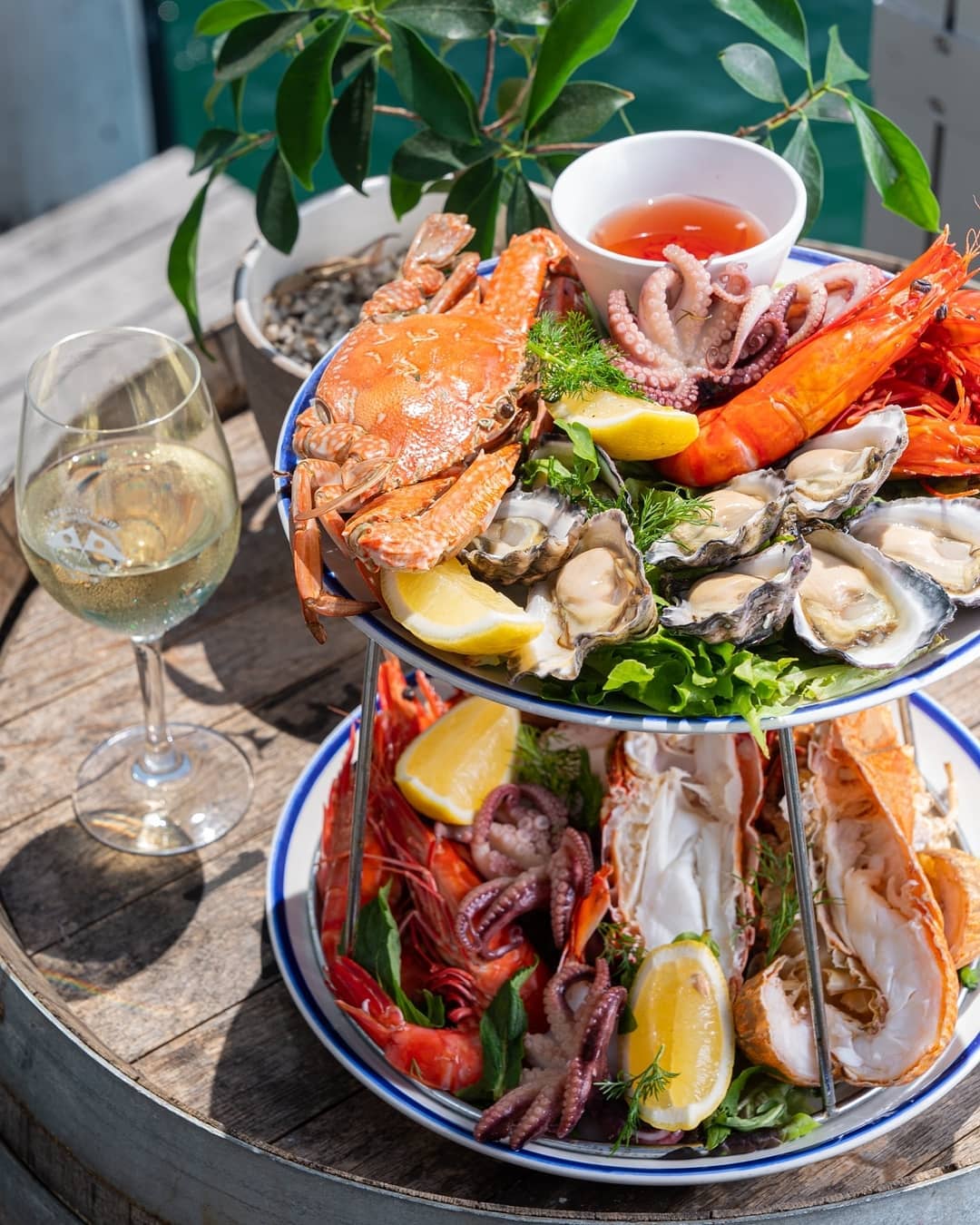
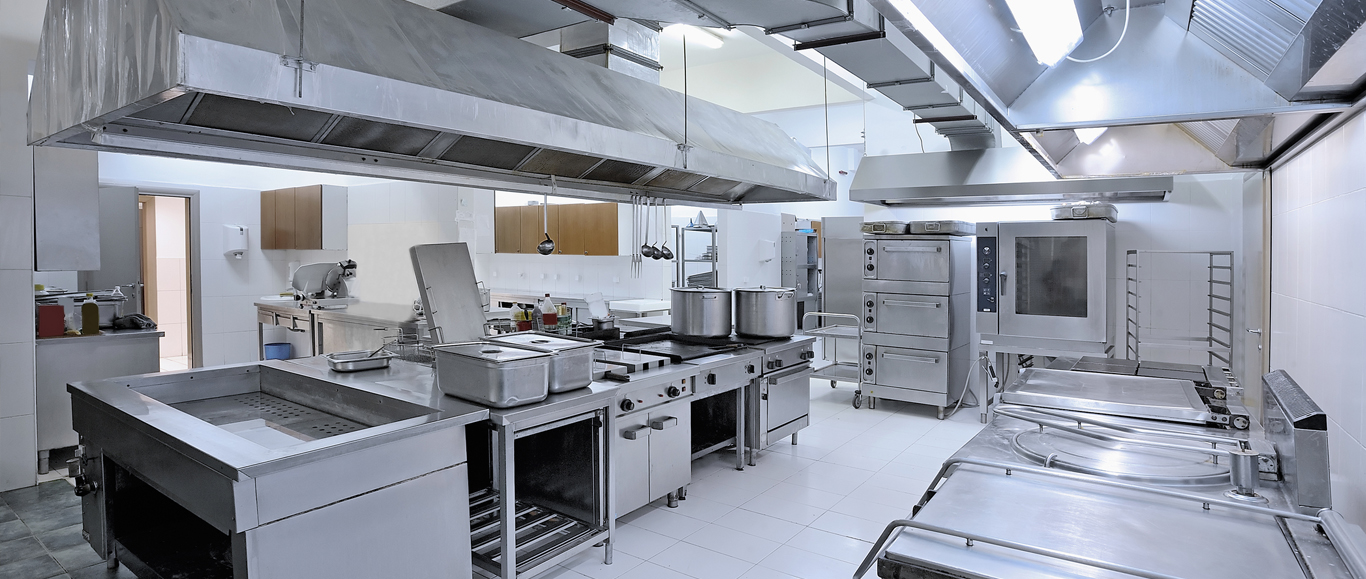
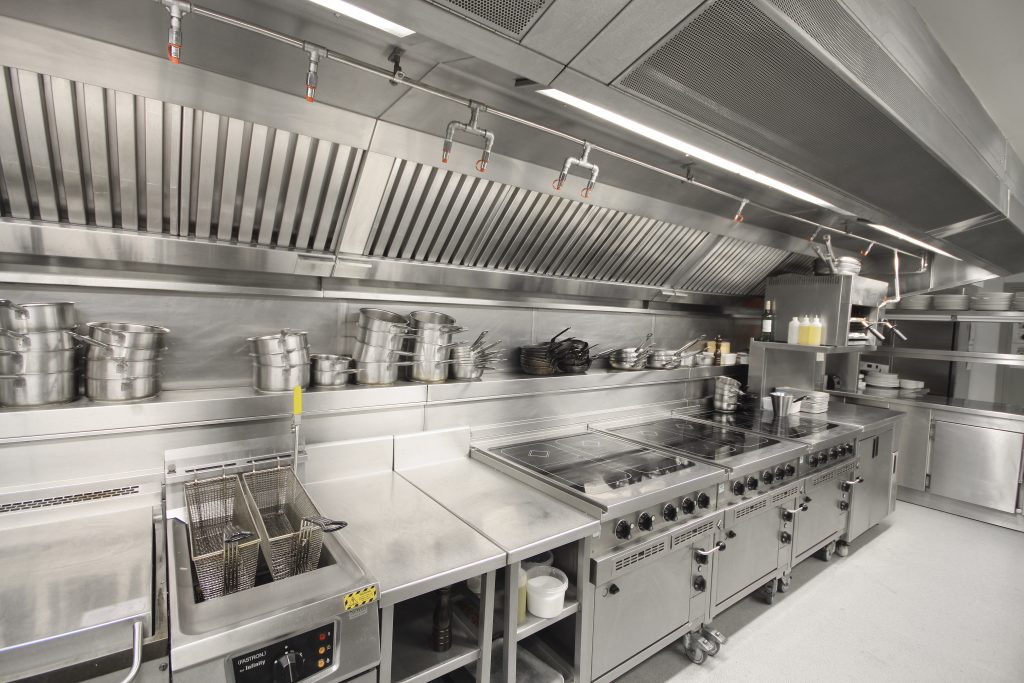
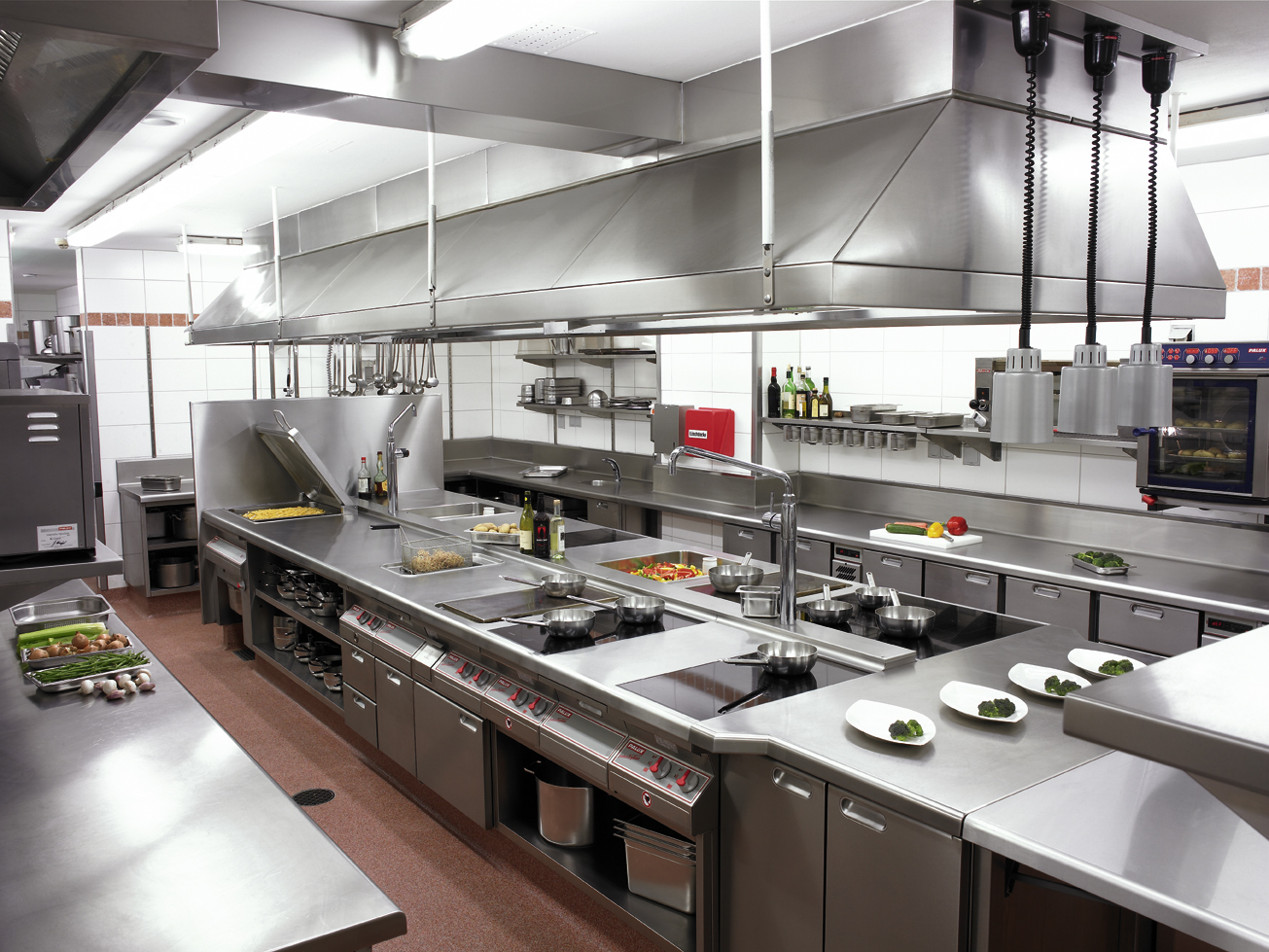
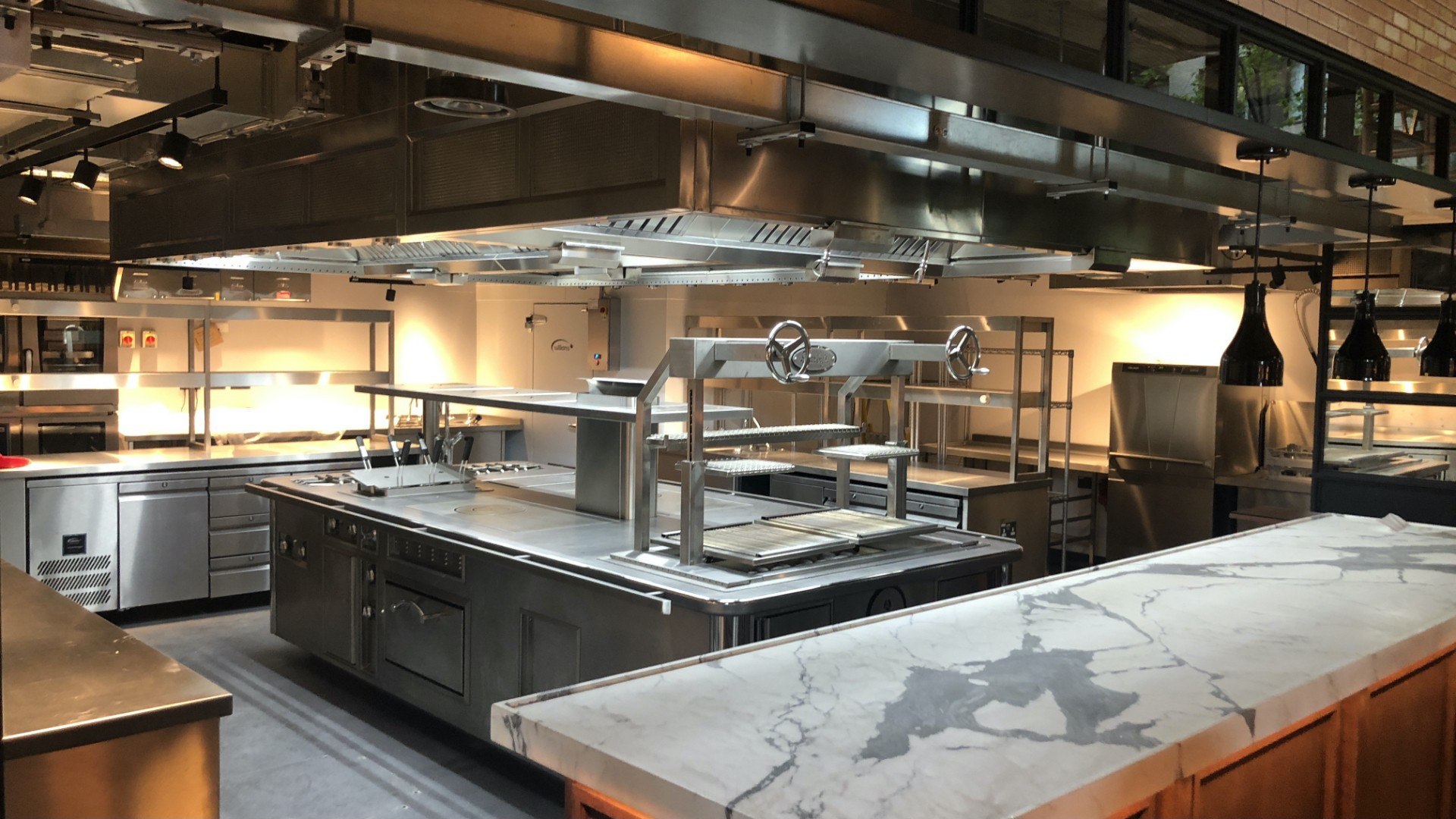


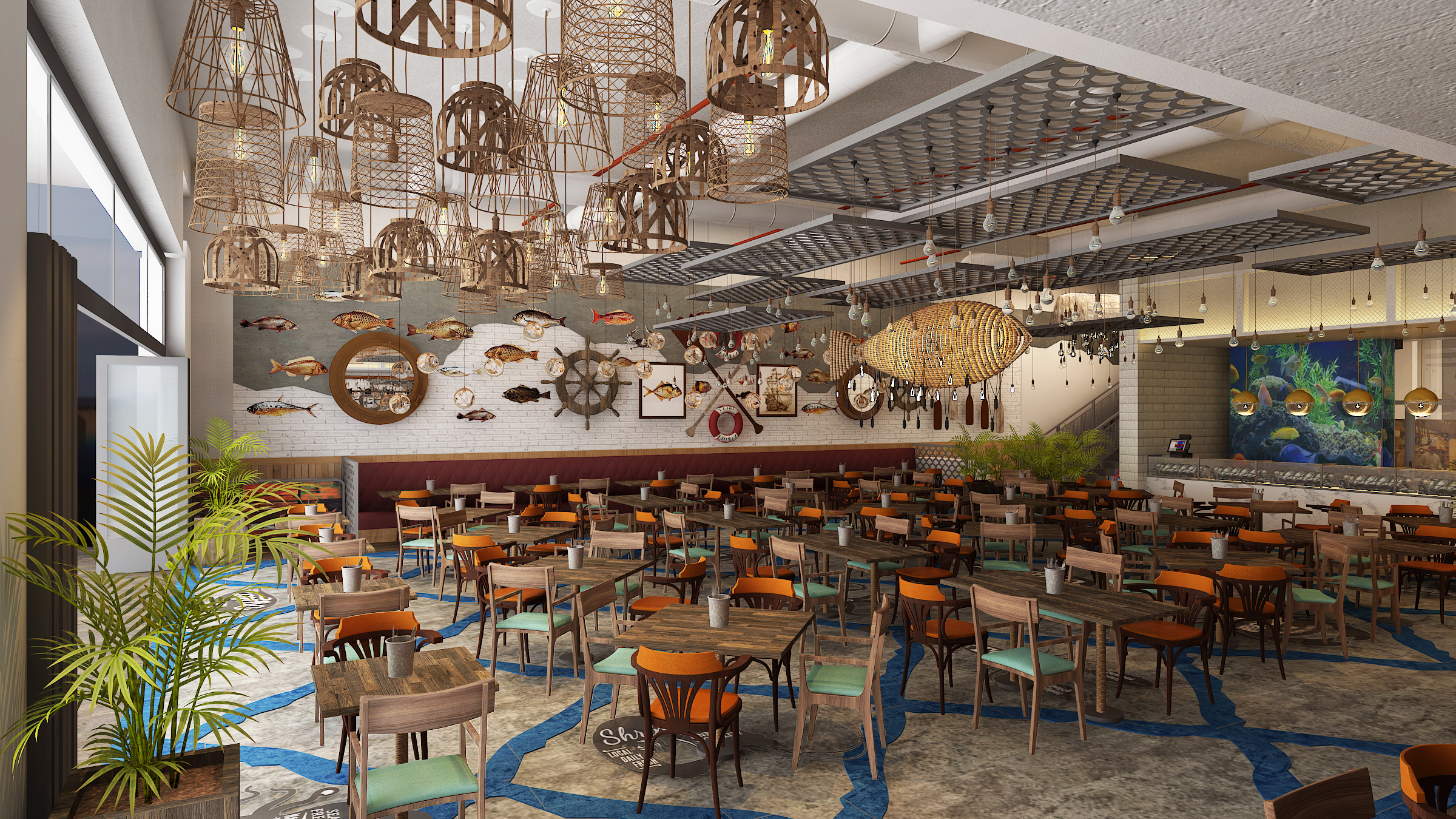

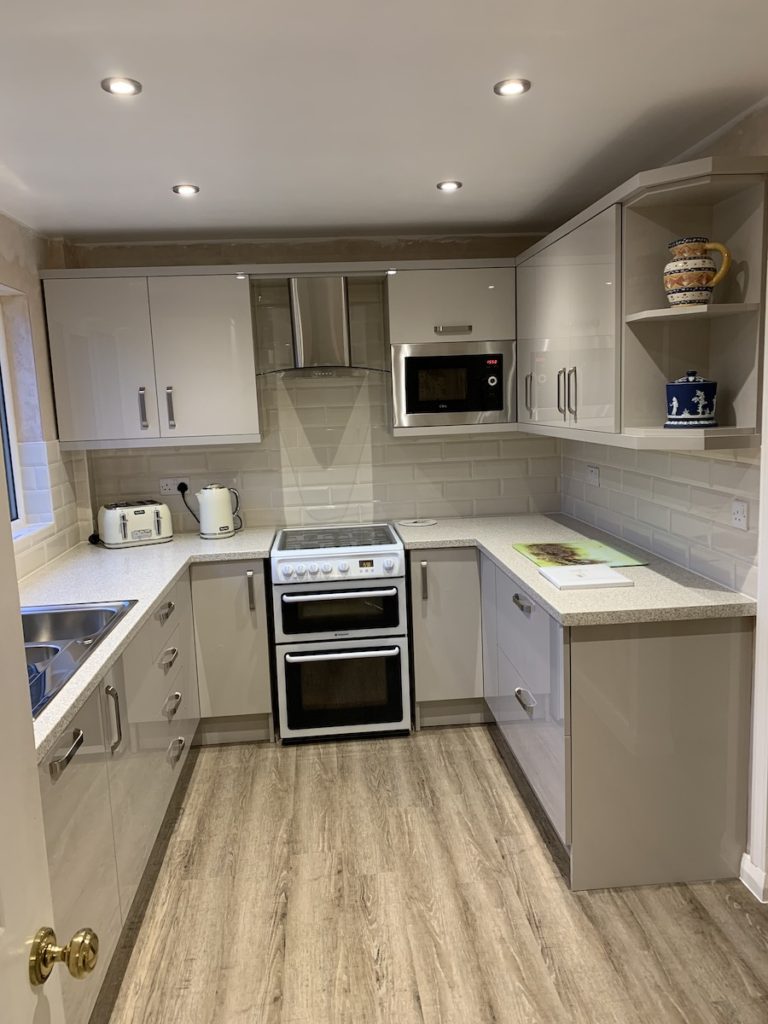


.jpg)
